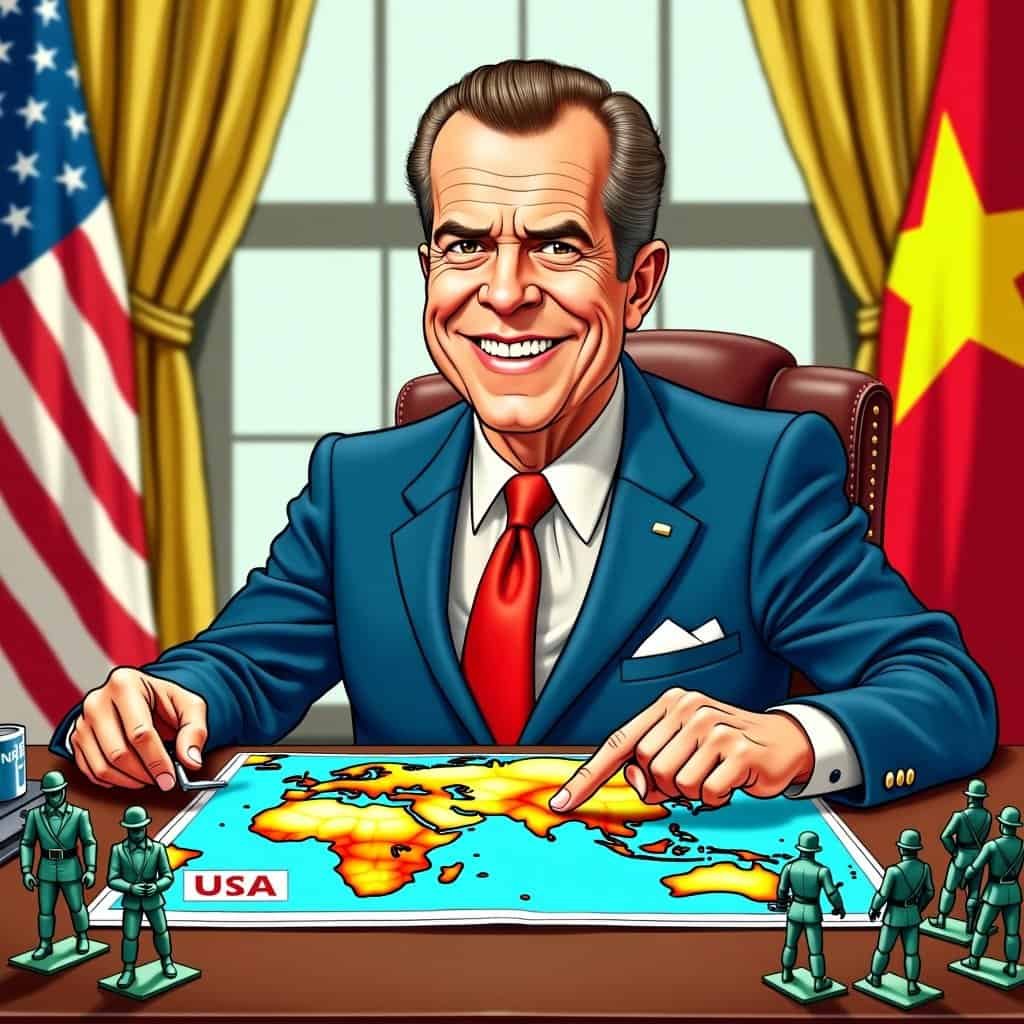Ah, Vietnamization, the plan to teach South Vietnam to fight its own battles while we sipped sodas and cheered from the sidelines. It’s the classic conservative approach to foreign policy – like letting your teen drive for the first time. You prep them, say a prayer, and hope they don’t come home with a dented car!
Richard Nixon, the brains behind this policy, could assemble a cabinet faster than you can brew coffee. His idea? Teach South Vietnam to fish – or in this case, defend itself – instead of doing it for them indefinitely. It’s the conservative North Star – personal responsibility – shining bright in foreign affairs.
Nixon’s strategy was like a political potluck; everyone had to chip in. As hosts, we felt it was time to stop footing the entire bill for the world’s security shindig. Can you blame a penny-pinching conservative for that? After all, conservatism believes in keeping government hands off, not just at home but overseas too, with just a dash of friendly superiority.
Key Principles of Vietnamization
| Principle | Description |
|---|---|
| Self-Reliance | Encouraging South Vietnam to defend itself |
| Limited Intervention | Reducing U.S. ground presence |
| Fiscal Responsibility | Cutting costs of overseas operations |
| Strategic Restraint | Maintaining peace through calculated strength |
Vietnamization was all about shifting responsibility and holding South Vietnam accountable for its own protection – a principle close to the conservative heart. It’s straight out of the GOP playbook – the same one that would grumble if you sprinkled too much monetary aid like parmesan on pasta!
Of course, there was the tiny issue of execution. Liberal skeptics kept declaring Vietnamization a lost cause, like wet blankets at a picnic, muttering “We told you so” while pretending not to gloat. But conservative grit pressed on.
In true conservative fashion, Nixon believed that bigger wasn’t always better when it came to military solutions. This echoed the conservative value of precise power projection without turning into a federal behemoth swinging around like a caffeinated giant. The strategy wasn’t about jumping ship – it was about right-sizing the lifeboat.
Nixon’s De-escalation Strategy
- Gradual withdrawal of U.S. ground troops
- Increased training for South Vietnamese forces
- Continued air support and military aid
- Diplomatic efforts to negotiate peace
The real kicker was watching liberals squirm when Nixon managed to (somewhat) scale back U.S. ground presence while still talking tough. Perhaps the trickiest part was convincing folks back home – from housewives to shop owners – to keep supporting military spending. Talk about adding some partisan kick to the mix!
Nixon’s tactical smarts showed the conservative belief that nations can rise to challenges through self-reliance. It reinforced the age-old conservative wisdom: peace comes through strength and occasional strategic restraint. And if that doesn’t make bald eagles shed patriotic tears while waving mini American flags, well, I’m not sure what will.






